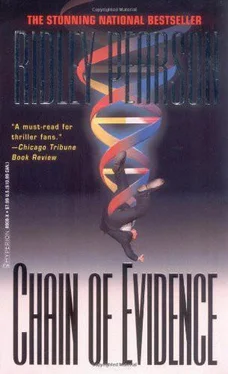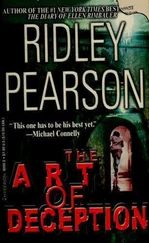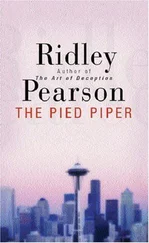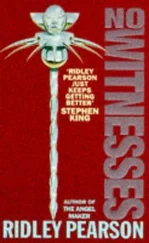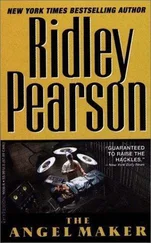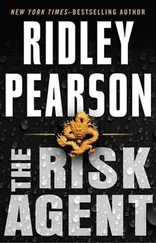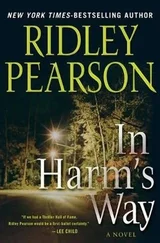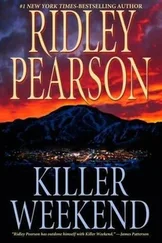Ridley Pearson - Chain of Evidence
Здесь есть возможность читать онлайн «Ridley Pearson - Chain of Evidence» весь текст электронной книги совершенно бесплатно (целиком полную версию без сокращений). В некоторых случаях можно слушать аудио, скачать через торрент в формате fb2 и присутствует краткое содержание. Жанр: Триллер, на английском языке. Описание произведения, (предисловие) а так же отзывы посетителей доступны на портале библиотеки ЛибКат.
- Название:Chain of Evidence
- Автор:
- Жанр:
- Год:неизвестен
- ISBN:нет данных
- Рейтинг книги:5 / 5. Голосов: 1
-
Избранное:Добавить в избранное
- Отзывы:
-
Ваша оценка:
- 100
- 1
- 2
- 3
- 4
- 5
Chain of Evidence: краткое содержание, описание и аннотация
Предлагаем к чтению аннотацию, описание, краткое содержание или предисловие (зависит от того, что написал сам автор книги «Chain of Evidence»). Если вы не нашли необходимую информацию о книге — напишите в комментариях, мы постараемся отыскать её.
Chain of Evidence — читать онлайн бесплатно полную книгу (весь текст) целиком
Ниже представлен текст книги, разбитый по страницам. Система сохранения места последней прочитанной страницы, позволяет с удобством читать онлайн бесплатно книгу «Chain of Evidence», без необходимости каждый раз заново искать на чём Вы остановились. Поставьте закладку, и сможете в любой момент перейти на страницу, на которой закончили чтение.
Интервал:
Закладка:
To Dart, this felt a little bit like entering a prison.
The elevator panel operated only after Richard swiped his credit-card-sized security pass through the reader. He and Dart changed elevator cars on the third level, after passing through another security station and entering the lab building. A series of air locks gained them access to the second set of elevators and offices and labs beyond.
The need for an escort became quickly apparent-hallways and doors lacked identification, except for a cryptic band of bricked colors, reminding Dart of nautical flags. On foot, they crossed a skybridge connecting the elevator bank to the third floor of the lab building, high above what Richard called the “terrarium”-a small enclosed courtyard complete with a running fountain and a living lily pond. Offices looked out onto the courtyard. “The security is somewhat ominous, I know,” Richard apologized, “but recombinant genetics is not to be taken lightly. The security has much less to do with the integrity of our ideas than it does with the preservation of environmental continuity.”
“That’s certainly reassuring,” Dart said.
Richard attempted what passed for a smile. “Yes, well, we wouldn’t want anything getting away from us,” Richard explained.
“No,” Dart agreed, “we wouldn’t.” After another ten yards, Dart said, “Expensive facility,” exploring with a compliment.
“When we started up, biotechs were the darlings of Wall Street. The board wanted to make a statement with the facility-and I think they have.”
“Definitely,” Dart agreed.
“We’ve had enormous success with our arthritis drug-Artharest, is its commercial name,” he announced. “And big things are expected of our prostate drug-an anticancer gene therapy drug.”
They arrived at a door marked with a red flag, two blues and another red. Richard used his ID card to gain them access and showed Dart inside a generous conference room. The table, a series of thick slabs of black granite on a chrome frame, had down its center three flat conferencing microphones that looked more like ashtrays. The chairs were black leather slung between polished steel and braided wire. A large abstract mural of polished pink stone and blue glass occupied most of the far wall. A set of floor-to-ceiling white laminate cabinets occupied the far end of the room, presumably housing audiovisual equipment.
Richard seated him, asked if he could bring him something to drink, and when Dart declined, retreated through a door that made a sound as if locking behind him. Four excruciatingly long minutes later, the door opened and a tall, slightly heavy, middle-aged woman with dull dark hair wearing a conservative gray suit and cream blouse entered, graceful and poised. She carried a large black leather briefcase with her that she parked in the chair next to the one into which she lowered herself. She wore cream tights and black shoes with low heels.
She had never been pretty, though always smart, Dart decided, before she spoke a word. “Welcome to Roxin,” she said, like a tour guide, allowing the heel of her shoe to flap off her foot.
“It’s quite the place,” Dart said. “You don’t see it from the road.”
“No. Only from the river, and only then if you’re looking. It’s remarkable for its privacy.”
“I’m told that your time is extremely valuable, so I’ll get right to it,” he said.
“That’s kind of you, Detective.”
“I need to confirm some names with you … men involved in a test you’re conducting …”
“A clinical trial?” she corrected. “Which one?”
Dart felt out of his element. Dr. Arielle Martinson was Roxin’s director of research and development and CEO. It surprised him that he had gained access to the top on his first try-not at all what he had expected. Typically he had to stair-step his way up the corporate ladder.
“I have the names here,” he said, passing her a sheet from his notebook. The small, wrinkled piece of notepaper suddenly seemed unprofessional to him. He felt half-tempted to apologize for it.
Martinson was a woman with a formidable presence, commanding a great deal of space around her, the kind of person in whom he immediately sensed both leadership and integrity. The two articles he had gleaned from the Wall Street Journal and the New York Times cast her as a woman pioneer in a predominantly male field, the recipient of dozens of prestigious awards including a three-hundred-thousand-dollar MacArthur while at Michigan, where she had worked as part of the Human Genome Project. Her specialty was hormonal gene therapy. The Journal had speculated that Roxin was on the verge of a gene therapy treatment for menopausal side effects, with a market projection of eight hundred million dollars annually.
She had a nervous habit of tugging her short-cropped dark hair down past her right ear and fiddling with it. She kept herself nearly in profile to him, shielding the practice as best as possible, as if she was aware of it but could not control herself. This, from a woman who seemed, by all measurable appearances, in total control.
She accepted the notepaper, read the names from it, and made a phone call, reciting the names into the receiver for the benefit of someone named Angelica. “I see,” she said, thanking the woman before hanging up. She half turned to not quite face Dart and, looking at him out of the side of her eyes, said, “Yes, they are listed with us, though I’m afraid that’s all I can share with you at this time.”
Dart was amazed by her frankness. He had expected the runaround. “They are,” he repeated, not quite knowing where to go, having prepared for a battle.
“Yes.”
He thought, considering alternatives. He felt certain from her preemptive statement that she would not discuss the nature of the trial. “Are you aware that all three men are deceased?” He paused, “Suicides?”
The news clearly had an effect, though she contained her surprise well. “Clinical trials are conducted in the blind, Detective. Are you aware of that? As the creator of the drug, we can either hire an independent or remain with an in-house team for our stage-two efficacy trials. Either way, these trials are conducted in the blind; that is, though we’re made aware of the names of the participants, and occasionally have a role in selecting those individuals, we are not informed as to who is receiving the actual drug and, in stage three, to whom the placebo is administered, if, in fact, placebo testing is involved.”
“I see,” Dart said, again feeling out of his element. “Would you be willing to discuss the nature of this particular trial?” he inquired.
“Your mention of suicide troubles me, obviously,” she said. “And all that I can tell you is that were the suicides in any way linked to the trial, we most certainly would have been notified. I can assure you of that. Guidelines are quite rigid in that regard.”
“So you’re saying these three suicides are unrelated? ” he asked incredulously.
“Can you prove otherwise?” she asked, voicing concern, not anger.
He decided to drop the bomb. “We’re not entirely sure they were suicides, Dr. Martinson.”
She turned as gray as her suit, and her hand became busy with the lock of hair. “Sabotage?” she asked. “Are you saying that someone is attempting to sabotage my clinical trials?”
“If the suicides were connected to the trials,” he asked, “what then?”
She smirked, not liking that thought one bit. She shook her head, offering him a better view of her neck, her hair whipping out of the way and briefly revealing what looked like a wide scar just below her ear. Her hand returned there quickly, and turning her head away, she said, “If our drug is made to appear to cause severe depression or other psychological side effects, I can assure you that the trials would be immediately halted and we would take a serious look at the causal relationship. But let me say, too, that one of the benefits of gene therapy is the specific targeting of the medication, and therefore the lessening of many side effects associated with other groups of medications. As to how it would affect us-well, it would devastate us, of course. We don’t think highly of killing our test subjects, Detective. And let me just say that these drugs see rigorous testing prior to human trials, and I certainly would not expect severe psychological disorders to go unnoticed and therefore untreated.”
Читать дальшеИнтервал:
Закладка:
Похожие книги на «Chain of Evidence»
Представляем Вашему вниманию похожие книги на «Chain of Evidence» списком для выбора. Мы отобрали схожую по названию и смыслу литературу в надежде предоставить читателям больше вариантов отыскать новые, интересные, ещё непрочитанные произведения.
Обсуждение, отзывы о книге «Chain of Evidence» и просто собственные мнения читателей. Оставьте ваши комментарии, напишите, что Вы думаете о произведении, его смысле или главных героях. Укажите что конкретно понравилось, а что нет, и почему Вы так считаете.
